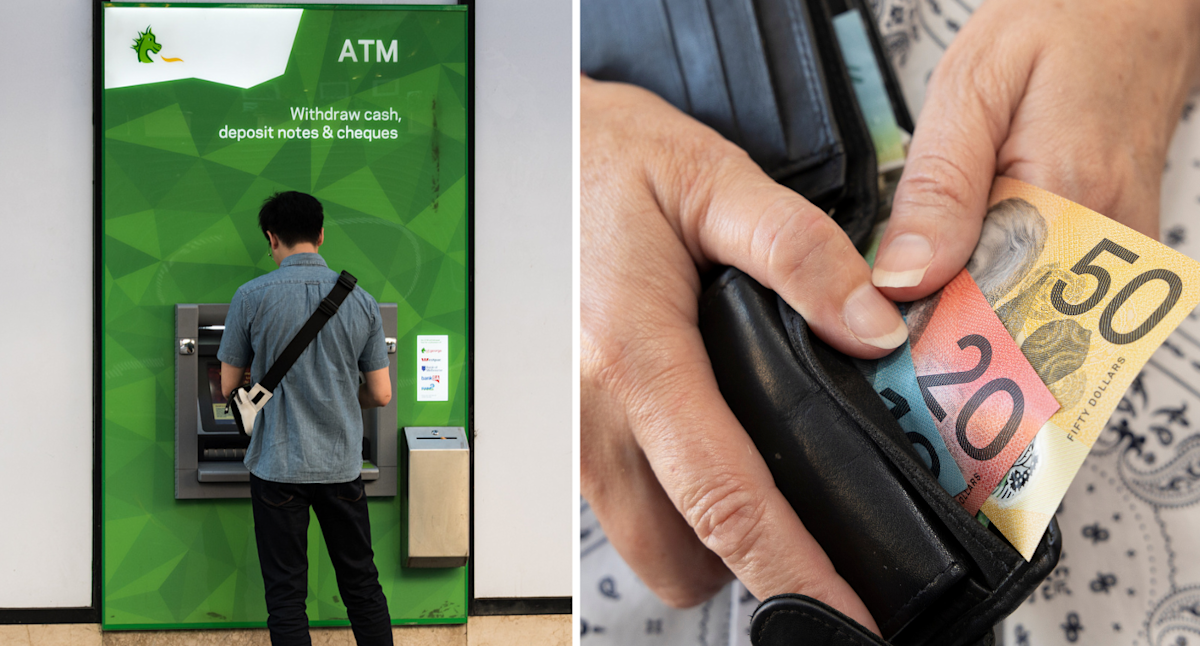St George business customers will soon be charged more for staff-assisted transactions. (Source: Getty)
St George Bank has responded to backlash over increasing fees for business customers who want to withdraw or deposit cash. Staff-assisted transactions at St George branches currently set these customers back $1 every time.
However, this will be increased by 200 per cent to $3 at the beginning of September. A spokesperson for the bank told Yahoo Finance this change will bring it in line with the fee structure at Westpac, which owns St George.
“The changes will provide consistency across Westpac and St George so that all business customers are treated the same,” the spokesperson said.
RELATED
“Our fees remain competitive in market, and online transactions will be free. We also have a number of fee-free options available for customers.”
The bank stressed that the changes to these fees will not be applied to everyday customers.
The fee-free options include withdrawing up to $1,000 in cash each day from select ATMs, depositing up to $10,000 per day per account, depositing 40 cheques at a time, and $0 monthly fee transaction accounts.
Do you have a story? Email stew.perrie@yahooinc.com
St George business customer Joe told 2GB Radio the fee hike was “outrageous” and revealed the bank isn’t stopping just at staff-assisted transactions.
The number of monthly fee-free transactions for business customers will be slashed from 30 per month to just five. The fee to deposit and clear cheques is going up from 50 cents to $3, a 500 per cent increase.
Fellow customer Gus told Ben Fordham he was fuming when he received a letter explaining the change.
“It’s just ridiculous. It’s basically showing no loyalty to customers. I’ve been with them since day one,” he said.
“It doesn’t matter which bank you go to, that’s what they’re doing. It’s actually theft, you know, it’s the only way I see it.”
Commonwealth Bank tried to up its fees for the same type of transactions late last year for everyday customers, and it went down like a lead balloon.
The public backlash was so severe that Australia’s biggest bank eventually walked back on the idea and said it would consult with stakeholders to find a better way forward.
Then-assistant treasurer Stephen Jones said the fee was “a kick in the guts for ordinary Australians and the worst Christmas present imaginable”, adding that it was a “terrible” idea to hike the cost of withdrawing or depositing cash.
Story Continues
Before the U-turn on the fee increase was announced, CBA’s Group Executive Retail Banking Services, Angus Sullivan, said it was a necessary evil amid the change in the way people bank.
“The reality is, there’s also a cost associated with providing this service and Australians who don’t use the service, don’t want to pay for the service,” he told A Current Affair.
Angus Sullivan has defended CBA’s new withdrawal fee and said it will only affect around 10 per cent of customers. (Source: A Current Affair/Getty)
Yahoo Finance contributor Stephen Koukoulas said the issue highlighted how Aussies don’t understand how the banking system worked.
“It is expensive to have branches and post offices with plenty of available cash for customers,” he said.
“The transport costs paid by the banks to get cash distributed to all of their branches and post offices for the decreasing number of people who still use that service has increased.
“It also costs the banks a considerable amount to hold the cash safely and to have it ready for customers when they go to the counter and ask a teller to give them the cash when they make a withdrawal.”
The Australian Banking Association (ABA) recently admitted the sector is experiencing the biggest transformation in the country’s history.
With cash transactions only making up a small portion of payments these days, compared to card and mobile wallet, banks are being forced to pivot in how they operate and what they offer.
“In 2007 about 70 per cent of everything we paid for we used real cash,” ABA boss Anna Bligh told 2GB.
“These days it’s about 10 per cent and the Reserve Bank estimates that’s going to be 4 per cent in by about 2030 so that has massive implications for what our branches are doing.
“If people aren’t coming in anymore to withdraw or deposit cash, then that really changes what a branch is and what it might look like in the future.”
Some banks have decided to shut down branches across the country, which has led to huge backlash, while others, like NAB, are investing more into their regional branch network.
Branches in some areas have also been upgraded to be “regional service centres” that still provide face-to-face assistance, but they might not carry any cash.
Get the latest Yahoo Finance news – follow us on Facebook, LinkedIn and Instagram.

